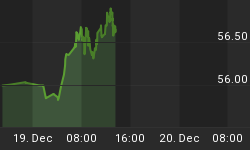What is a Negative RSI Divergence and why should you care?
A Negative RSI Divergence is a condition where the underlying stock or index is moving higher, while the Relative Strength is moving lower.
So what is happening, is that each up move in the market is being made with less strength. Eventually, there is not enough strength to match the amount of an upward movement, and then the market or stock falls.
No one knows for sure exactly when "divergent strength" will hit is limit relative to a stock or index rising. But what one does know for sure, is that the "amount of risks" one is taking in a trade is increasing as that happens. Many hedge funds and money managers look for those kinds of market behaviors as a sign that they should reduce their exposure through hedging or start taking profits on part of their positions.
So, why discuss Negative RSI Divergences this morning?
Because that is what is happening on the NYA Index and our Institutional "core holdings" index.
Take a minute and observe the chart below to see the Negative Divergence that is developing now. Unless this pattern changes soon, the negative divergence will become too large to sustain the market's desire to move higher.
(In our charts, we use a C-RSI which zero bases the Relative Strength so one can interpret it easily and quickly. An explanation of the C-RSI can be found at this link: C-RSI explained.)
















